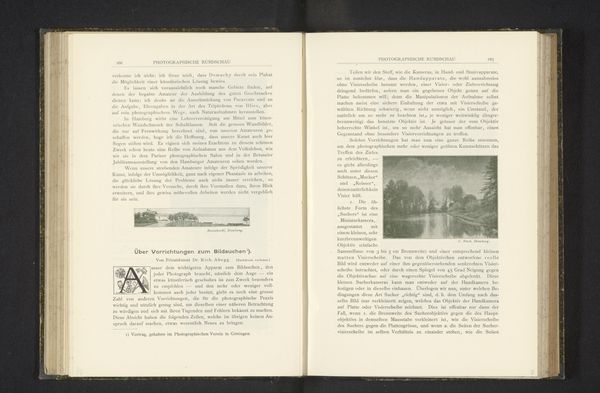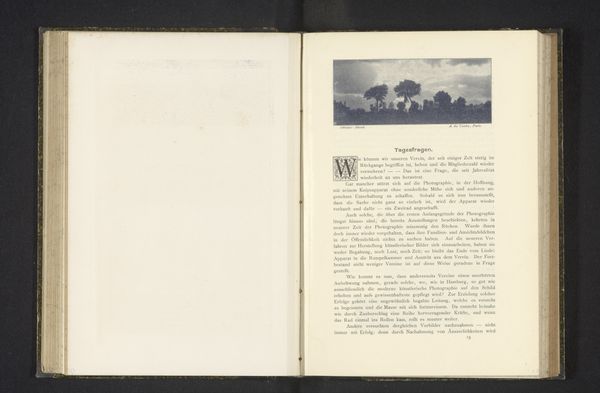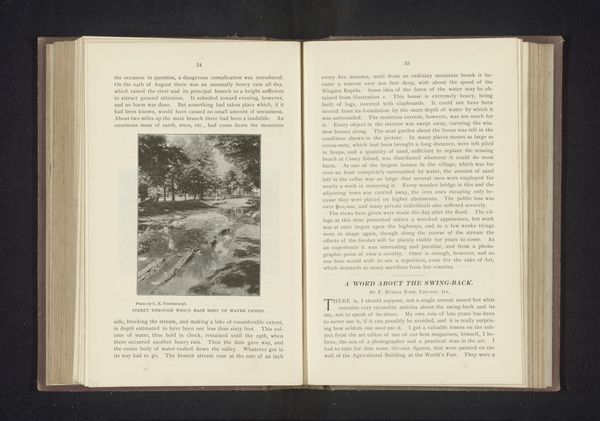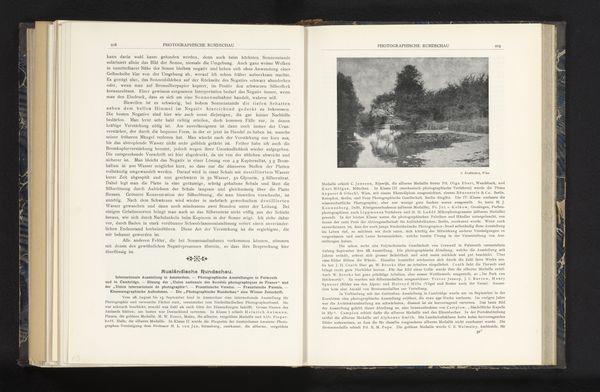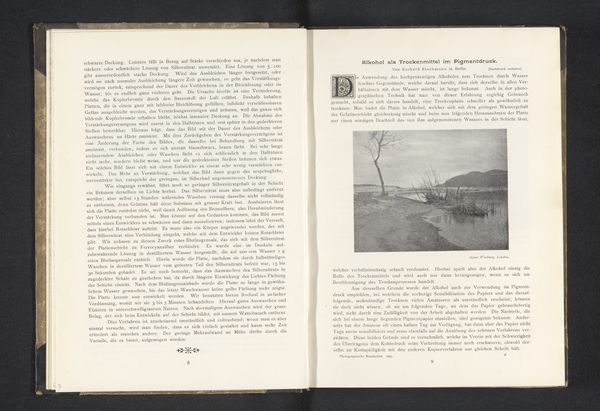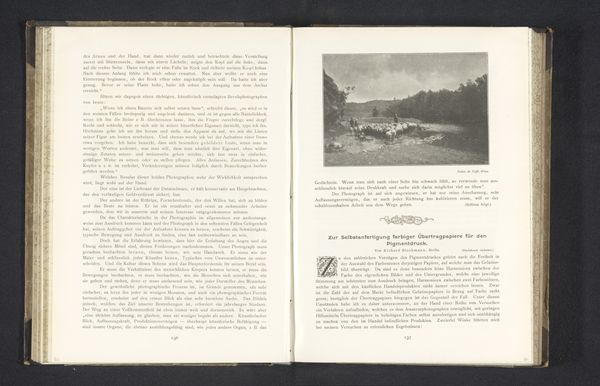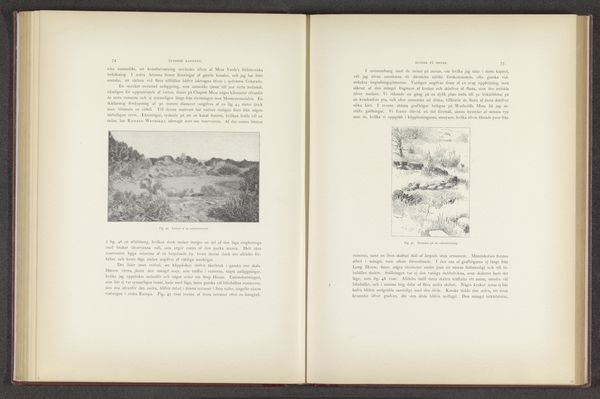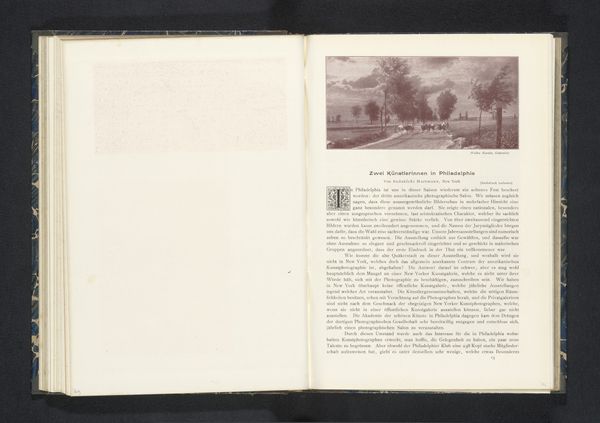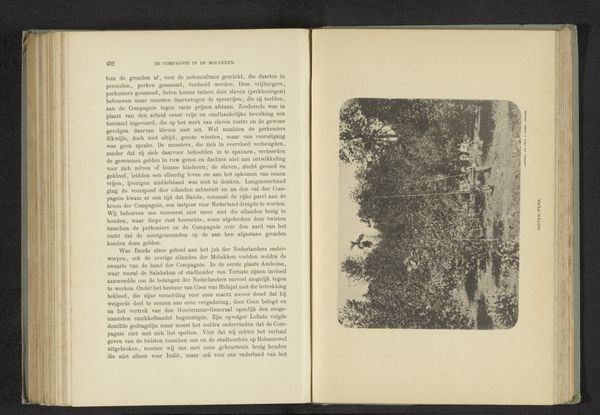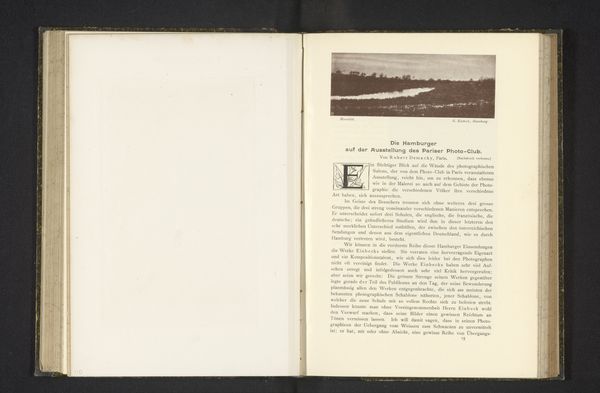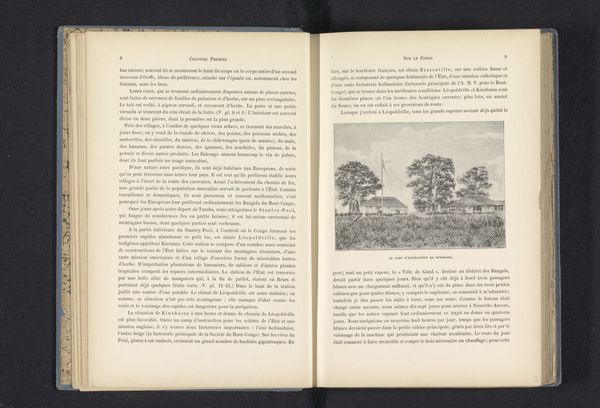
lithograph, print, photography
#
lithograph
# print
#
landscape
#
photography
Dimensions: height 82 mm, width 115 mm
Copyright: Rijks Museum: Open Domain
Curator: This image, "Duinlandschap," dating from before 1898, is presented as a lithograph within a printed publication. What strikes you about it? Editor: Well, initially, there’s this immediate impression of stillness and muted tones. The composition is interesting with that path winding into what seems to be the core of the landscape, and the bare trees give a distinct sense of isolation. Curator: The photograph used for the lithograph, potentially by P. Ickx, invites us to consider notions of romanticism. Its representation of nature, seemingly untouched, reflects an interesting commentary on the cultural value placed on landscapes at the time. How does this sit within broader colonial narratives and the representation of "virgin" territories ripe for exploitation? Editor: The materiality certainly reinforces this reading. Think about the labor involved in creating both the photograph and then reproducing it as a lithograph. It would have been quite the production involving different artisans. Does the photomechanical process speak to an increasing standardization of artistic creation, somewhat like the assembly line? Curator: Absolutely, we have to unpack who this imagery was targeted towards and what stories it reinforced about the human relationship to land and notions of progress. In this way we have to ask how gender and race shaped access to nature at the turn of the century, both as image producers and audiences, shaping the dominant visual discourse. Editor: It really makes you think about the relationship between the means of production, consumption, and how these depictions played a role in a certain ideology around progress. What was it like to actually visit that place? Were you a person able to own the representation or the place? Curator: By centering class and privilege, what we may interpret as the serene pastoral scene speaks directly to the economic disparity defining Belgium. So I’m struck at how this image prompts broader discussions about place, ownership and the mediation of experience through visual culture. Editor: I think that is such a fitting reflection that reminds us how much an analysis into materiality and production can provide insight into even more personal and philosophical inquiries of identity and lived reality.
Comments
No comments
Be the first to comment and join the conversation on the ultimate creative platform.

